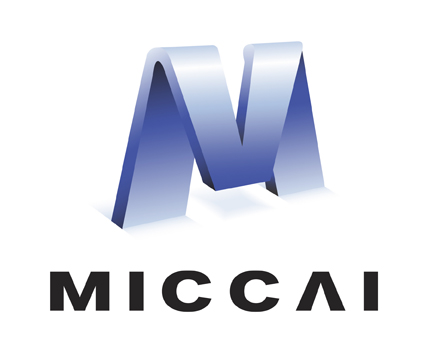Abstract
Magnetic resonance imaging (MRI) is the most sensitive technique for breast cancer detection among current clinical imaging modalities. Contrast-enhanced MRI (CE-MRI) provides superior differentiation between tumors and invaded healthy tissue, and has become an indispensable technique in the detection and evaluation of cancer. However, the use of gadolinium-based contrast agents (GBCA) to obtain CE-MRI may be associated with nephrogenic systemic fibrosis and may lead to bioaccumulation in the brain, posing a potential risk to human health. Moreover, and likely more important, the use of gadolinium-based contrast agents requires the cannulation of a vein, and the injection of the contrast media which is cumbersome and places a burden on the patient. To reduce the use of contrast agents, diffusion-weighted imaging (DWI) is emerging as a key imaging technique, although currently usually complementing breast CE-MRI. In this study, we develop a multi-sequence fusion network to synthesize CE-MRI based on T1-weighted MRI and DWIs. DWIs with different b-values are fused to efficiently utilize the difference features of DWIs. Rather than proposing a pure data-driven approach, we invent a multi-sequence attention module to obtain refined feature maps, and leverage hierarchical representation information fused at different scales while utilizing the contributions from different sequences from a model-driven approach by introducing the weighted difference module. The results show that the multi-b-value DWI-based fusion model can potentially be used to synthesize CE-MRI, thus theoretically reducing or avoiding the use of GBCA, thereby minimizing the burden to patients. Our code is available at https://github.com/Netherlands-Cancer-Institute/CE-MRI.
T. Zhang and L. Han—Equal contribution.
Access this chapter
Tax calculation will be finalised at checkout
Purchases are for personal use only
Similar content being viewed by others
References
Amornsiripanitch, N., Bickelhaupt, S., Shin, H.J., Dang, M., Rahbar, H., Pinker, K., Partridge, S.C.: Diffusion-weighted MRI for unenhanced breast cancer screening. Radiology 293(3), 504–520 (2019)
Avants, B.B., Tustison, N.J., Song, G., Cook, P.A., Klein, A., Gee, J.C.: A reproducible evaluation of ants similarity metric performance in brain image registration. Neuroimage 54(3), 2033–2044 (2011)
Baltzer, P., et al.: Diffusion-weighted imaging of the breast-a consensus and mission statement from the EUSOBI international breast diffusion-weighted imaging working group. Eur. Radiol. 30, 1436–1450 (2020)
Broome, D.R., Girguis, M.S., Baron, P.W., Cottrell, A.C., Kjellin, I., Kirk, G.A.: Gadodiamide-associated nephrogenic systemic fibrosis: why radiologists should be concerned. Am. J. Roentgenol. 188(2), 586–592 (2007)
Chung, M., et al.: Deep learning to simulate contrast-enhanced breast MRI of invasive breast cancer. Radiology 306, 213199 (2022)
Goldhirsch, A., et al.: Personalizing the treatment of women with early breast cancer: highlights of the St Gallen international expert consensus on the primary therapy of early breast cancer 2013. Ann. Oncol. 24(9), 2206–2223 (2013)
van der Hoogt, K.J.J., et al.: Factors affecting the value of diffusion-weighted imaging for identifying breast cancer patients with pathological complete response on neoadjuvant systemic therapy: a systematic review. Insights Imaging 12(1), 1–22 (2021). https://doi.org/10.1186/s13244-021-01123-1
Iima, M., Honda, M., Sigmund, E.E., Ohno Kishimoto, A., Kataoka, M., Togashi, K.: Diffusion MRI of the breast: current status and future directions. J. Magn. Reson. Imaging 52(1), 70–90 (2020)
Kanda, T., Ishii, K., Kawaguchi, H., Kitajima, K., Takenaka, D.: High signal intensity in the dentate nucleus and globus pallidus on unenhanced t1-weighted MR images: relationship with increasing cumulative dose of a gadolinium-based contrast material. Radiology 270(3), 834–841 (2014)
Kleesiek, J., et al.: Can virtual contrast enhancement in brain MRI replace gadolinium?: a feasibility study. Invest. Radiol. 54(10), 653–660 (2019)
Li, W., et al.: Virtual contrast-enhanced magnetic resonance images synthesis for patients with nasopharyngeal carcinoma using multimodality-guided synergistic neural network. Int. J. Radiat. Oncol.* Biol.* Phys. 112(4), 1033–1044 (2022)
Mann, R.M., Cho, N., Moy, L.: Breast MRI: state of the art. Radiology 292(3), 520–536 (2019)
Mann, R.M., Kuhl, C.K., Moy, L.: Contrast-enhanced MRI for breast cancer screening. J. Magn. Reson. Imaging 50(2), 377–390 (2019)
Marckmann, P., et al.: Nephrogenic systemic fibrosis: suspected causative role of gadodiamide used for contrast-enhanced magnetic resonance imaging. J. Am. Soc. Nephrol. 17(9), 2359–2362 (2006)
Nguyen, N.C., Molnar, T.T., Cummin, L.G., Kanal, E.: Dentate nucleus signal intensity increases following repeated gadobenate dimeglumine administrations: a retrospective analysis. Radiology 296(1), 122–130 (2020)
Olchowy, C., et al.: The presence of the gadolinium-based contrast agent depositions in the brain and symptoms of gadolinium neurotoxicity-a systematic review. PLoS ONE 12(2), e0171704 (2017)
Partridge, S.C., Newitt, D.C., Chenevert, T.L., Rosen, M.A., Hylton, N.M., Team, A.T., Investigators, I.S.T.: Diffusion-weighted MRI in multicenter trials of breast cancer. Radiology 291(2), 546–546 (2019)
Sung, H., et al.: Global cancer statistics 2020: GLOBOCAN estimates of incidence and mortality worldwide for 36 cancers in 185 countries. CA: Cancer J. Clin. 71(3), 209–249 (2021)
Yi, X., Walia, E., Babyn, P.: Generative adversarial network in medical imaging: a review. Med. Image Anal. 58, 101552 (2019)
Acknowledgments
The authors are thankful for the support from the Guangzhou Elite Project (TZ-JY201948) and Chinese Scholarship Council.
Author information
Authors and Affiliations
Corresponding author
Editor information
Editors and Affiliations
1 Electronic supplementary material
Below is the link to the electronic supplementary material.
Rights and permissions
Copyright information
© 2023 The Author(s), under exclusive license to Springer Nature Switzerland AG
About this paper
Cite this paper
Zhang, T. et al. (2023). Synthesis of Contrast-Enhanced Breast MRI Using T1- and Multi-b-Value DWI-Based Hierarchical Fusion Network with Attention Mechanism. In: Greenspan, H., et al. Medical Image Computing and Computer Assisted Intervention – MICCAI 2023. MICCAI 2023. Lecture Notes in Computer Science, vol 14226. Springer, Cham. https://doi.org/10.1007/978-3-031-43990-2_8
Download citation
DOI: https://doi.org/10.1007/978-3-031-43990-2_8
Published:
Publisher Name: Springer, Cham
Print ISBN: 978-3-031-43989-6
Online ISBN: 978-3-031-43990-2
eBook Packages: Computer ScienceComputer Science (R0)





